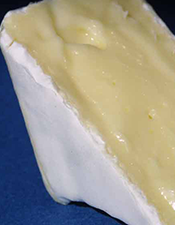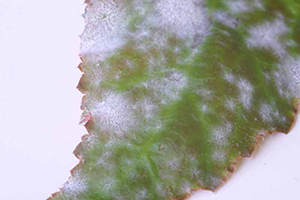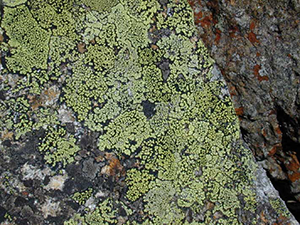This page is thought for people who have not come across fungi much (apart, perhaps, from button mushrooms on their pizza) and who'd like to get a glimpse of where fungi occur or what they can do and why researchers are interested in them. The following list is by no means comprehensive, rather it shall arouse interest to do some further exploring of the fungal world. You can find some web pages with more information and/or pictures of fungi in the links section.

Fungi are a group of eukaryotes (organisms with nuclei in their cells) and have evolved parallel to animals. Fungi can be single cells (then they are usually called 'yeasts') or multicellular, in which case they can grow as filaments or 'hyphae' that form a 'mycelium'. Fungi occur in virtually all habitats, and the list below shows some ecologically or economically important or just interesting aspects of fungal biology.
This picture shows a somewhat simplified phylogenetic tree of some major groups of eukaryotes in the top blue part (indicated in the lower blue parts are the other two major groups of living organisms, the bacteria and the archaea). As we know today, the majority of eukaryotic species are unicellular, and only few groups (e.g. plants, animals, fungi and kelps) have evolved to form complex multicellular structures. Eumycota or 'true fungi' are shown in red, they are a sister group to the animals. A more detailed phylogeny of fungi is shown below (indicated by a red arrow). Fungi can be subdivided into several major groups, four of which are shown here: The Chytridiomycetes, Mucoromycotina, Ascomycetes, and Basidiomycetes. The species on the right are some examples for fungi the genomes of which have already been fully sequenced (there are a lot more fungal genomes available now, these are just some examples).

Camembert cheese. The white substance on the outside is the fungal mycelium, usually from Penicillium camembertii or Penicillium candidum. The fungi help to give the camembert its typical taste.

Mildew on a leaf. The white, powdery substance mainly consists of fungal spores, so-called conidia. They are easily carried away by the wind and can infect other plants.

Fruiting body of the fly agaric (Amanita muscaria). The fungus is well-known for its being poisonous, less-well for being a mycorrhizal fungus. It can often be observed under birch trees (which is where this picture was taken), but also forms symbiontic relationships with other tree species.

Lichens on rocks on top of Mt. Lafayette, White Mountains, NH, USA. Lichens often grow in habitats where most plants cannot persist. Neither the fungal partner nor the algae alone can grow under these conditions. Only as symbionts, they are able to survive.
